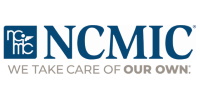ASHINGTON, D.C.—The brief respite from faster-growing health care costs sputtered in the first half of 2004 as health costs per privately insured American grew 7.5 percent—virtually the same rate as in 2003, according to a study released jointly today by the Center for Studying Health System Change (HSC) and the Employee Benefit Research Institute (EBRI). Health care spending growth slowed in both 2002 and 2003—after peaking at 10 percent in 2001—but outpaced growth in the U.S. economy by a considerable margin. That trend continued in the first half of 2004 with health care costs still growing at a faster rate (7.5%) than the unusually high 5.9 percent increase in per capita gross domestic product (GDP) during the same period. "Health care costs are likely to continue growing faster than workers' income for the foreseeable future, leading to more uninsured Americans and raising the stakes for policy makers to initiate cost-containment policies or accept the current trend of rapidly growing health costs and shrinking health coverage," said Paul B. Ginsburg, Ph.D., coauthor of the study and president of HSC, a nonpartisan policy research organization funded principally by The Robert Wood Johnson Foundation. Research has shown that if health care costs rise at a significantly faster rate than incomes, more people become uninsured. In fact, the gap between trends in health care costs and incomes is the most important factor behind the long-term trend toward a smaller proportion of Americans with private insurance. "Even though health care cost increases have moderated compared to recent years, as long as they are increasing faster than wages and overall inflation, both public- and private-sector employers will continue to try to control those costs," said Dallas Salisbury, CEO of the Employee Benefit Research Institute, which underwrote the study. "That includes examining ways to shift costs to workers, and probably a movement toward account-based health plans." The study analyzes per capita spending on health care services—inpatient and outpatient hospital care, physician services and prescription drugs—commonly covered by private insurance. Per capita health care spending trends—also often referred to as cost trends—are important because they largely determine future health insurance premium trends. The study's findings are published jointly as an HSC Issue Brief and EBRI Notes titled Tracking Health Care Costs: Spending Growth Slowdown Stalls in First Half of 2004. The study is available online on both HSC’s and EBRI’s Web site. Growth in spending on hospital inpatient care slowed to 5.1 percent in the first half of 2004, down from 6.4 percent in the second half of 2003. While spending on outpatient hospital care held steady at 11.4 percent, outpatient care, nonetheless, remained the fastest growing category of health spending. Hospital utilization—inpatient and outpatient combined—continued to grow at a slow rate (0.8%) for the second year in a row, but hospital prices rose sharply—7.7 percent in the first half of 2004—and accounted for much of the hospital spending increase. The large jump in hospital prices is due in part to strong growth in wage rates for hospital workers, which have been driven up by a persistent worker shortage, particularly for nurses. Nonetheless, the most recent increase in hospital wage rates—4.5 percent in the first half of 2004—was considerably smaller than recent hospital price increases and has declined significantly from the peak wage rate increase of 6.3 percent in the second half of 2001. "Additional factors appear to be driving up hospital prices," said Bradley C. Strunk, an HSC health researcher and study coauthor. "One possibility is a sharp decline since 2001 in hospital Medicare margins—a situation that creates a strong incentive for hospitals to shift costs to private payers." The slowdown in hospital utilization growth may reflect an increase in health plans' utilization management activities as they selectively reinstate such tools as prior authorization requirements for some hospital services. The slow utilization growth in 2004 also may reflect continuing increases in patient cost sharing for hospital care. While prescription drugs receive much of the blame for rising health care costs, the reality is that the spending trend for prescription drugs has slowed markedly from the high growth rates in the late 1990s. During the first half of 2004, spending on prescription drugs per privately insured person grew 8.8 percent, slightly lower than the 9.6 percent increase in the second half of 2003. By comparison, spending on prescription drugs peaked at 19.5 percent in the second half of 1999—a time when drug spending accounted for a much larger share of the overall spending increase. During the first half of 2004, drug prices increased by 3.1 percent, largely unchanged from the 2.7 percent increase in the second half of 2003. The trend for prescription drug utilization also held steady, with drug utilization per person increasing 5.5 percent in the first half of 2004. By comparison, drug utilization grew by as much as 12.9 percent in the late 1990s. During the first half of 2004, spending on physician care grew by 5.7 percent—only slightly higher than the 5.4 percent increase in the second half of 2003. Roughly equal growth in price and utilization accounted for the increase. The price trend for physician care has not increased much in recent years—in stark contrast to the hospital price trend. ### ### The Center for Studying Health System Change is a nonpartisan policy research organization committed to providing objective and timely research on the nation's changing health system to help inform policy makers and contribute to better health care policy. HSC, based in Washington, D.C., is funded principally by The Robert Wood Johnson Foundation and is affiliated with Mathematica Policy Research, Inc. *** *** Established in 1978, the Employee Benefit Research Institute (EBRI) is the only nonprofit, nonpartisan organization committed exclusively to data dissemination, policy research, and education on economic security and employee benefits. The Institute's mission is to advance the public's, the media's and policy makers' knowledge and understanding of employee benefits and their importance to our nation's economy. FURTHER INFORMATION, CONTACT: Alwyn Cassil, HSC: (202) 264-3484 Steve Blakely, EBRI: (202) 775-6341
Source




